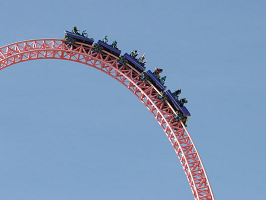I’ve previously written about how I like to think of stocks as bonds. Of course, I know this is a bit of overreach, but it’s a useful exercise when putting things in the proper perspective. For instance, I find bonds intuitively easy to understand. After all if you buy a AAA rated T-Note with a 5 year maturity then you know your time horizon, nominal risk, and return. In other words, you know every single element of this instrument when accounting for how it fits into your portfolio. The only way you can make a behavioral mistake when managing this position is by misunderstanding one of these aspects. For instance, if interest rates rise by 1% 1 year after you buy the bond and you get scared out of your 5 year bond because you treated it like a 1 year bond then you just flat out misunderstood the instrument. You treated it like something it’s not which led to a behavioral mistake and a permanent loss of capital.
Of course, the stock market is a different beast. You don’t know its time horizon, return or its nominal risk. But we can make reasonable estimates about each. For instance, if you own an index fund of US firms you own a high quality stream of cash flows that has a long-term track record of earning about 7% in profits per year. It takes a long time for these cash flows to accrue and they are relatively uneven over time, but becoming more stable across longer time horizons. So it’s not unreasonable to think of the stock market as though it’s a multi-decade high quality bond with something like a 7% coupon.¹
The kicker with the stock market is that it operates like a super volatile long-term bond because it doesn’t have any fixed or guaranteed return stream. Even its dividends could be cut to 0% in theory. In fact, it’s reasonable to assume that that 7% figure is going to be wrong for long periods of time. It might even be higher or lower. So we have to treat the stock market like it’s a super long-term instrument whose cash flows will accrue over very long periods of time. Treating the stock market like anything other than this is exactly like treating that 5 year T-Note like it’s a 1 year bond. This is a misunderstanding that will expose you to behavioral risks.
In a perfect world the stock market would just perfectly predict this ~7% coupon and its returns would look like a straight line from bottom left to top right. That isn’t what happens for obvious reasons. So, instead of a nice smooth line like you get with a money market fund’s total returns, you end up with something that looks more like a rollercoaster. This rollercoaster creates risk for the misinformed investor and also creates opportunities for the informed investor. So, when the stock market is booming 22% year-to-date as it was just recently the informed investor can comfortably look at this and know that a 22% return is unsustainable. At the same time, when the stock market declines a bit as it has in recent weeks the informed investor can look at the long-term scope of returns and know that the stock market needs to fall at times in order for its long-term upward rise to be sustainable. This sort of perspective not only creates potential opportunities, but also helps establish a sound behavioral benchmark from which we can properly view the stock market’s often manic episodes.
¹ – This is also consistent with the way that I calculated the stock market’s “duration” in Understanding Modern Portfolio Construction. Using a conservative estimate of future cash flows based on historical dividends give us a stock market duration that is close to 30 years.
Mr. Roche is the Founder and Chief Investment Officer of Discipline Funds.Discipline Funds is a low fee financial advisory firm with a focus on helping people be more disciplined with their finances.
He is also the author of Pragmatic Capitalism: What Every Investor Needs to Understand About Money and Finance, Understanding the Modern Monetary System and Understanding Modern Portfolio Construction.

